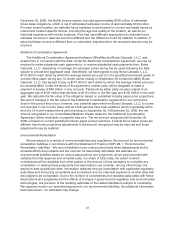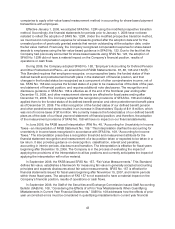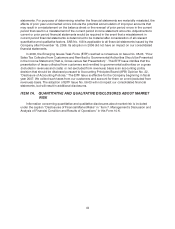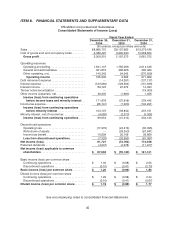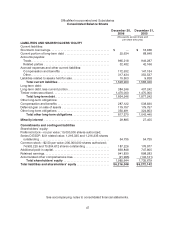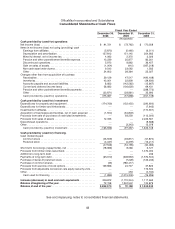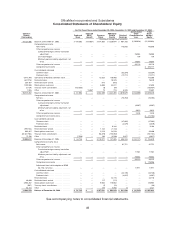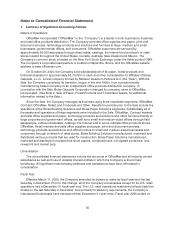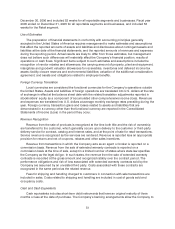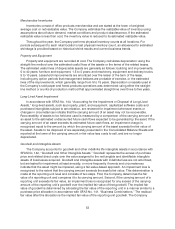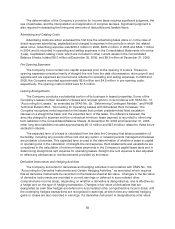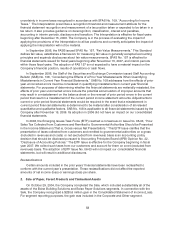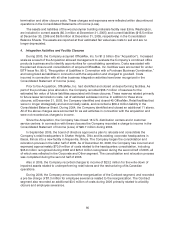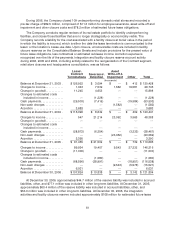OfficeMax 2006 Annual Report Download - page 55
Download and view the complete annual report
Please find page 55 of the 2006 OfficeMax annual report below. You can navigate through the pages in the report by either clicking on the pages listed below, or by using the keyword search tool below to find specific information within the annual report.51
December 30, 2006 and included 52 weeksfor all reportable segments and businesses. Fiscal year
2005 ended on December 31, 2005 for all reportable segments and businesses, and included 53
weeks for theRetail segment.
Use of Estimates
The preparation of financial statements in conformity with accounting principles generally
accepted in the United States of America requires management to make estimates and assumptions
that affect the reported amounts of assets and liabilities and disclosures about contingentassets and
liabilities at the date of the financial statements, and the reported amounts of revenues and expenses
during the reporting period. Actual results are likely to differ from those estimates, but management
doesnot believesuch differences will materially affect the Company’s financial position, results of
operations or cash flows. Significant items subject to such estimates and assumptions include the
recognition ofvendor rebates and allowances; the carrying amount ofproperty, plant and equipment,
intangibles and goodwill; valuation allowancesfor receivables, inventories and deferred income tax
assets; facility closure reserves and environmental liabilities; valuation of the additional consideration
agreement; and assets and obligations related to employee benefits.
Foreign Currency Translation
Local currencies are considered the functional currencies for the Company’s operations outside
the United States. Assets and liabilitiesof foreign operations are translated intoU.S. dollars at the rate
of exchange ineffect at the balance sheet date with the related translation adjustments reported in
stockholders’ equity as acomponent of accumulated other comprehensive income(loss). Revenues
and expenses are translated into U.S. dollars at average monthlyexchange rates prevailing during the
year. Foreign currency transaction gains and losses related to assets and liabilities that are
denominated in a currency other than the functional currency are reported in the Consolidated
Statements of Income(Loss) in the period they occur.
Revenue Recognition
Revenue fromthe sale of products isrecognized at the time both title and the risk of ownership
aretransferred to the customer, whichgenerally occursupon delivery to the customer or third-party
delivery service forcontract, catalog and Internet sales, and at the point of sale for retail transactions.
Service revenue is recognized as the services are rendered. Revenue is reported less an appropriate
provision for returns andnet of coupons, rebates and other sales incentives.
Revenue fromtransactions in whichthe Company acts as an agent or broker is reported on a
commission basis. Revenue from thesaleofextended warranty contracts is reported on a
commission basis at the time of sale, except in a limited number ofstates where statelaw specifies
the Company as the legal obligor. In such states, the revenue fromthe sale of extended warranty
contracts is recorded at the gross amount and recognized ratably over the contract period. The
performance obligations and risk of lossassociated with extended warranty contracts sold by the
Company are assumed by an unrelated third party. Costs associated with these contracts are
recognized in the same period as the related revenue.
Fees for shipping and handling charged to customers inconnection with sale transactions are
included in sales. Costs related to shipping and handling are included in cost of goods sold and
occupancy costs.
Cash and Cash Equivalents
Cash equivalents includes short-term debt instruments that have an original maturity of three
months or less at the date of purchase. The Company’s banking arrangementsallow the Company to


